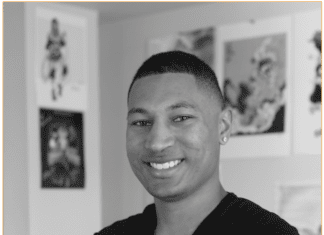Johno Ellison is the author of Mastering SOLIDWORKS Sheet Metal we got the chance to sit down with him and find out more about his experience of writing with Packt.
Q: What is/are your specialist tech area(s)?
Johno: SolidWorks 3D CAD, Product Design, Design Engineering
Q: How did you become an author for Packt? Tell us about your journey. What was your motivation for writing this book?
Johno: I’ve been using SolidWorks CAD for a 3D modeling for over fifteen years and so I often get people asking me for tips and help, so I decided to actually start teaching CAD.
I looked at the existing SolidWorks tutorials and courses and found that a lot of those were very abstract, so they were hard for students to digest and remember. So I created an extensive SolidWorks tutorial based on real-world examples, with the idea that if students could relate what they were modeling to their own experience then they would be able to understand (and remember!) the lessons better.
This got a great response, with thousands of students signing up, so from there I went to create courses in more specialist areas, such as Sheet Metal. Packt approached me with the idea of creating a book teaching SolidWorks Sheet Metal and it just seemed like a perfect next step.
Q: What kind of research did you do, and how long did you spend researching before beginning the book?
Johno: I work with SolidWorks every day and had previously created detailed courses on the book’s subject, so luckily I didn’t have to do much background research… but I still wanted the book to be a reliable authority so during the writing I spent quite a lot of time checking my assumptions and experience.
Q: Did you face any challenges during the writing process? How did you overcome them?
Johno: My support team at Packt was great and they made the entire process pretty painless! As an independent freelancer, I’m pretty used to managing my own time, so I just penciled the writing process into my diary as just another job, and tackled a little more every day.
Q. What’s your take on the technologies discussed in the book? Where do you see these technologies heading in the future?
Johno: In terms of work, and 3D CAD – we’re in a very interesting time in many areas as automation increases and changes the world of work. On the one hand, I foresee CAD tools becoming easier to use and open to a wider audience (of both professionals and hobbyists). However, on the other hand, I think that while more people will be able to create models for 3D printing (and other manufacturing methods) there will still be great value in the manufacturing experience that traditional engineers bring to the table.
Q: Why should readers choose this book over others already on the market? How would you differentiate your book from its competition?
Johno: Related to the point above – it’s relatively easy to make a 3D model or use a tool in the computer program, but understanding how this will actually relate to real-world manufacturing is critical. This book is written with the benefit of years of experience of creating real parts, so rather than just following the steps to use the SolidWorks tools, the user will hopefully under the ‘why’ behind these.
Q. What are the key takeaways you want readers to come away from the book with?
Johno: Sheet Metal is often overlooked as a manufacturing process, especially in a world of increasing 3D printing, but it’s a very valuable addition to any engineer’s toolbox. Ultimately, SolidWorks, and design engineering in general, is about selecting the right tool to complete your brief, so by adding Sheet Metal you open up your options greatly.
Q. What advice would you give to readers learning tech? Do you have any top tips?
Johno: My number one tip for completing anything – be it learning a new CAD program, writing a book or even getting fit – is to break it down into smaller chunks and then just nibble away at those regularly. Try setting yourself an hour (or less, if you can’t spare it) at the start of your day, before any distractions of work, that you can use for self-improvement. Then try to religiously stick to that hour every day.
It can be overwhelming to see a huge project ahead of you, but just tick off little sections at once and you’ll be amazed how quickly you get through it.
Q. Do you have a blog that readers can follow?
Johno: I have a website – johnoellison.com – but it’s more a portfolio page, so the best place to get hold of me is via LinkedIn (listed under Johno Ellison)
Q. Can you share any blogs, websites, and forums to help readers gain a holistic view of the tech they are learning?
Johno: It really depends exactly on the area of learning. For design inspiration I love ‘Yanko Design’, for manufacturing tips, ‘Proto Labs’ has an excellent series of tips, and for CAD work ‘GrabCAD’ has a huge library of models that you can download and reverse engineer to improve your skills.
Q. How would you describe your author journey with Packt? Would you recommend Packt to aspiring authors?
Johno: I’ve previously written a travel book and so writing wasn’t entirely new to me, but the team at Packt organized everything in such a way that writing followed a very logical and structured process. I’d definitely recommend working with Packt.
Q. Do you belong to any tech community groups?
Johno: Not really – I tend to work fairly independently because I jump around so many different areas of Product Design!
Q. What are your favorite tech journals? How do you keep yourself up to date on tech?
Johno: I try just to keep up to date with tech news using sites like Reddit, as well as more traditional media outlets.
Q. How did you organize, plan, and prioritize your work and write the book?
Johno: I’d previously taught the same subject online and so luckily I already had an overall layout of the subject that I knew worked well. I was able to combine this with student feedback to tweak the content for a written version. Then I worked with a great content supervisor at Packt and we created an overall plan for the book’s chapters, which I could then break down into smaller sections and actually write, using examples, screenshots, and text.
Q. What is that one writing tip that you found most crucial and would like to share with aspiring authors?
Johno: Similar to the tech tip above – block out some time every day that you just dedicate to the book. I followed the same process with my previous book (and am doing it with another travel book I’m working on now) of just spending an hour every day before I even check my emails, which I just use for writing. Personally, I like to do this first thing in the morning, so that it doesn’t get pushed off the end of my day when I have a big workload, but experiment with times and find what works for you.
It sounds really simple, but I truly believe that this is the key to achieving these goals!
You can find Johno’s book on Amazon by following this link: Please click here









